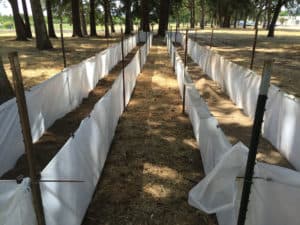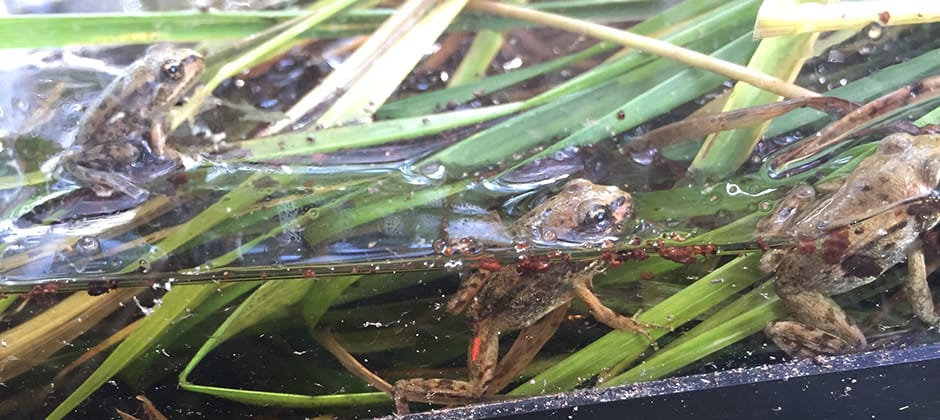Share this article
Stressed tadpoles develop lower fitness as adults
For frogs, a stressful early life as a tadpole can lead to long-term fitness consequences in adulthood.
“Even though you have this huge change in body morphology through metamorphosis, that doesn’t mean you’re going to be a completely different animal,” said Evan Bredeweg, a PhD candidate at Oregon State University and the lead author of a study published recently in Frontiers in Ecology and Evolution. “There are still going to be legacy effects.”
Bredeweg and his co-authors wanted to see how stress early in life might affect the development of frogs.
The northern red-legged frog (Rana aurora) is an amphibian found in the Pacific Northwest from Northern California to southwestern British Columbia, and its populations are declining in Oregon. They spend their early lives as tadpoles in ponds, then move into upland forests after metamorphosing into adults.

Researchers built runways to measure juvenile red-legged frog movement on land. ©Evan Bredeweg, Oregon State University
The researchers used tadpoles hatched from eggs gathered in the wild in Oregon in a series of small artificial ponds. To create a stressful environment, they reduced the water level of some ponds to about 20% of the starting level and left others at about the same level. The reduced water created higher maximum temperatures and lower minimum temperatures, left less area for the tadpoles to forage and led to more competition for resources.
They found that the water levels in the ponds had an effect on the size of the tadpoles after developing into frogs. “Animals in the permanent ponds were actually larger than the animals in the drier conditions,” Bredeweg said.
After the tadpoles developed, the researchers measured how quickly they moved up wet and dry runways made of topsoil to measure their movement behavior.
Smaller frogs, which were more often from the ponds with lower water levels, moved less quickly than those in high water. They were also slower to move from the get-go.
“In the wet environment, the animals were much more likely to move from the start,” Bredeweg said.
This lack of ability to move as much could have secondary impacts on a whole host of things important for survival. Frogs smaller in size and with less ability to move could be slower to escape from predators and might move shorter distances to find feeding or breeding opportunities.
Less movement might also mean they can’t move as far to find winter refuges and disperse to new areas in general.
These findings could have implications for the frogs under the changing climate.
“In the Pacific Northwest, the predictions for climate change is that there is going to be less summer precipitation and more precipitation during the winter,” Bredeweg said. If conditions are drier during key stages in tadpole development, it could mean whole populations of frogs are less physically fit and less able to survive the challenges of their environment.
But there is a positive side, Bredeweg said. The frogs managed to move even on the dry surfaces, which may be more common due to climate change. “Even in the face of dry conditions, they are still able to move,” he said.
Header Image:
Juvenile red-legged frogs raised in terrariums at Oregon State University.
©Evan Bredeweg, Oregon State University








